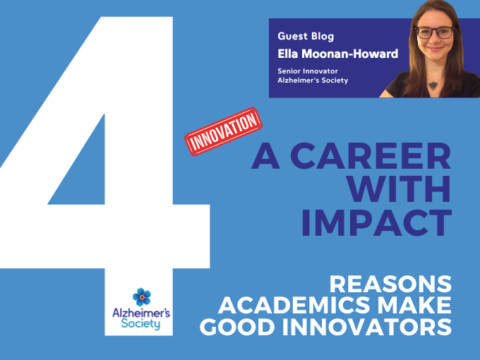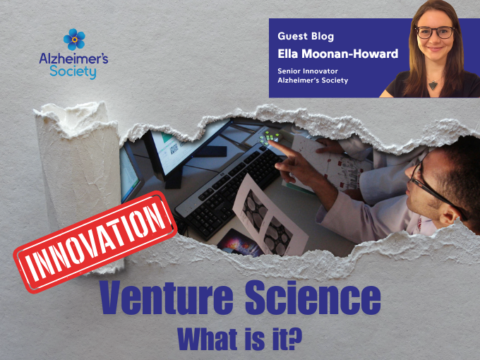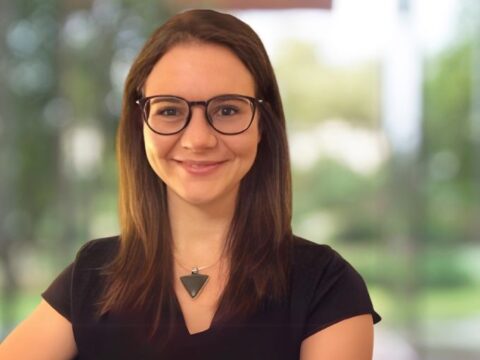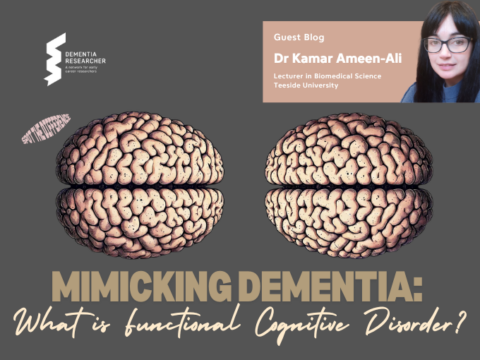This week Dr Aoife Kiely from Alzheimer’s Society and Dr Katie Subbs from Alzheimer’s Research UK talk with Dr Kirsty McAleese and Dr Keeley Brookes about their work on Brains for Dementia Research.
Brains for Dementia Research (BDR) was set up in 2007 to establish a network of brain bank facilities across England and Wales.
It is now a ‘gold standard’ for brain tissue banking, linking six leading centres (based in London, Oxford, Newcastle, Bristol, Manchester and Cardiff) in a network of common standards, best practice and cooperation. This lays the foundation to enable the highest quality dementia research, which aims to find a cure for dementia.
In each bank, people with mild cognitive impairment or a diagnosis of dementia, and healthy participants, are supported to donate their brain by specialist research nurses.
This initiative is unique from other brain banks, as the memory, thinking and behaviour of each prospective donor are monitored throughout their later life through regular assessments. This provides researchers with a complete medical history to accompany the donated brain tissue, allowing them to see how brain changes correlate with symptoms.
To find out more about the BDR service, and how it could help your research visit: https://www.brainsfordementiaresearch.org.uk/
Voice Over:
Welcome to the Dementia Researcher Podcast, brought to you by dementiaresearcher.nihr.ac.uk, a network for early career researchers.
Dr Aoife Kiely:
Hello, my name is Aoife Kiely, and I’m a research officer for Alzheimer’s Society. I’m pleased to be co-hosting this podcast recording for the NIHR Dementia Researcher website.
Dr Katie Stubbs:
My name is Katie Stubbs from Alzheimer’s Research UK, and I’ll be co-hosting this podcast with Aoife. This week, we’ll be discussing Brains for Dementia Research or BDR. Brains for Dementia Research is a brain tissue resource jointly funded by Alzheimer’s Society and Alzheimer’s Research UK. BDR is different from other brain banks, because it’s a network of brain banks, and therefore able to offer a wider range of cases, and also because they provide detailed medical history for each sample.
Dr Aoife Kiely:
Joining us today, we have two researchers who have used BDR tissue in their research. Could you introduce yourself?
Dr Kirsty McAleese:
Hi, I’m Dr. Kirsty McAleese, and I’m from Newcastle University, and I work with the Newcastle Brain Tissue Resource.
Keeley Brookes:
Hi, I’m Dr Keeley Brookes, and I’m from the University of Nottingham and Nottingham Trent University. I’m involved with the BDR, because I do the genetic analysis on it.
Dr Aoife Kiely:
Would you like to just tell us a little bit more about your research? What you actually do, how you use postmortem brain tissue?
Dr Kirsty McAleese:
My research focuses on white matter damage mainly in Alzheimer’s disease and also normal ageing. So the BDR is a great resource for me because it gives me access to these tissues of various different cases. My research is to understand the mechanisms of white matter damage, because we can actually see this on MRI scans in living patients. They’re used in various criteria for vascular dementia when the patient is alive, but my research shows that actually there are different mechanisms that’s not always associated with vascular pathology or vascular disease of the blood vessels. So therefore, it’s how can we unravel what we see in the pathology in the brains that are donated that could help people during life.
Keeley Brookes:
I extract the DNA from the postmortem brains from BDR, but also the bloods from the live samples. What we do is run this DNA on the neuro chip and do some exome sequencing with it so we can identify rare variants that are associated with Alzheimer’s disease. We’re also developing the polygenic risk score. Then we’re moving on to genomics, which is my area of expertise, so we’re looking at RNA sequencing, gene expression, and how the mechanisms control that. That may account for why these polymorphisms are associated with Alzheimer’s disease.
Dr Aoife Kiely:
Kirsty, you mentioned that your Alzheimer’s Society junior fellowship involves examining white matter changes in Alzheimer’s disease. Can you explain how using BDR tissue is more suitable or effective than say using an animal model of Alzheimer’s?
Dr Kirsty McAleese:
Yes, so I think it’s very important when, well I work with on human tissue, but I think it’s very important that with the BDR tissue we have the clinical diagnosis and the clinical information of the patient, and then we also have the tissue at the end. So any findings that I do find, whether it be with the white matter or the pathology and the diagnosis, I can relate back to the patient history during life as well as brain scans. We also, at Newcastle, perform postmortem brain scans in case we don’t have the images from life. That gives us a good representation of what we would see in a living individual. I think that’s the key with BDR that it’s both clinical and pathological data that’s available.
Dr Aoife Kiely:
Keeley, you work on an Alzheimer’s Research UK major project that’s led by professor Kevin Morgan. As you said already, you’re generating the genetic data from the BDR tissue. But I know you already have quite a large kind of DNA bank already. So what kind of additional benefit is adding the BDR samples to that?
Keeley Brookes:
As well as increasing sample size for statistical purposes, the BDR is unique, as Kirsty was just saying, in the fact that we have so much clinical data. So part of the reason why we have so much background noise when doing genetic analysis with complex diseases such as Alzheimer’s disease is because there is variation in the endophenotypes. With all the detailed clinical and pathology data we have from the BDR, we can correlate genetic polymorphisms with those endophenotypes rather than the disease, and it becomes a clearer finding.
Dr Aoife Kiely:
As well as doing all the sequencing, I understand that you’re also feeding that genetic information back into the BDR cohort as well.
Keeley Brookes:
Yes. I think that’s now available in the DPUK, and I think it’s also in the brain bank as well.
Dr Katie Stubbs:
Yeah, and I think that’s a great feature of BDR as well, that it’s not just the brain tissue that you’re getting, but you can get all the components of the tissue like DNA, RNA and CSF. I think a lot of people don’t realize that.
Dr Katie Stubbs:
If you were talking to a fellow researcher who wasn’t sure whether brain tissue was for them or they thought it was too complicated or wouldn’t be any help to the research, what would you guys tell them?
Dr Kirsty McAleese:
I would tell them that is very incorrect. I think human tissue is extremely valuable to any type of researcher working with dementia. This is what I preach a lot of the time to the biochemical and the animal models, the cell culture people who we come in contact with at conferences and in our university. I’ve a really good example of this actually. We just have a fantastic new research associate working with us, Dr. David Kost from Aberdeen. He’s worked for 10 years plus in animal models, and he was flabbergasted when he finally saw the true disease in human tissue. He saw amyloid beta for the first time that wasn’t from an animal model, and he couldn’t believe how different it was. Now that’s the one who studied this in depth for over 10 years, and tau as well, but I remember his face with the amyloid.
Dr Kirsty McAleese:
I think it’s really important. They do amazing work. They do things that I could never do, all these genetic, and transgenic mouse, and amazing cell models. But it has to relate to the human model cause that’s what we’re trying to do. And it’s so simple to get BDR tissue. You literally, if you have no idea what to do, you just email the BDR coordinator, tell her what you want, and she will signpost you directly to the brain bank that can help. It is literally filling out one form. That’s all it is. It’s so easy. It’s relatively cheap as well, but it can give you so much value to your animal models because you relate the translation of it into the human model.
Keeley Brookes:
Yep, totally second that especially with the genetic data being available there. I use it for my own genomics work, so I am selecting which brain tissue I want based on their genetics. So I don’t have to take a gamble of I just get 10 brains and hopefully there’ll be the right genotype. I can go to the brain bank, “Actually I want that sample, that sample and that sample.” My sample size is then correct for the power detection’s. I can do my analysis, and I know I can find a finding based on what the polymorphism might do.
Dr Kirsty McAleese:
You get a lot of pathological data as well. For Alzheimer’s disease for example, they’re all [inaudible 00:07:20] all of the routine diagnosis has done so you know exactly what you’re getting. You don’t have to do anything. All that data is freely available. It comes with the tissue. You just have to do your little experiment, and you can compare it with what you found in your models.
Keeley Brookes:
I think that’s probably one of the things that is a real benefit of BDR is that you don’t actually even have to be using the physical tissue samples. You can access that kind of in-depth clinical data, the neuropathological data, the genetic data as well.
Dr Kirsty McAleese:
At Newcastle, we actually perform quantitative analysis on the brains that are donated, and we have a data bank of over 350 cases now. So it could simply be that you request a group of 50 Alzheimer’s disease cases, but we’ve already done the data anyway. So if you’re trying to compare quantitative pathological burden of tau, for example, you want to compare it to how much you see in mice, we already have that data done. Sometimes you’d actually don’t need the tissue, you can just request the data. Varies between brain banks, but things like that are available.
Keeley Brookes:
If the data has been uploaded to the Dementias Platform UK, people just write for accessibility, put in their projects, it gets approved, you download it or actually you don’t download it. You do all the analysis on the DPUK platform and you’ve got it all there without having to go into the lab.
Dr Kirsty McAleese:
I personally just had a study with DPUK and access accepted, and I couldn’t believe how easy it was because I need some clinical data from BDR cases that I’m working with. I need to know the clinical, the notes from life during life from their GP visits, et cetera, which is only available on DPUK. It’s very daunting, “Oh I’ve got to go through this different platform.” Keeley and I were just saying it was so easy. In less than three weeks, I have full access and I’m awaiting my access code. It was so quick and easy.
Dr Katie Stubbs:
That’s fantastic.
Dr Aoife Kiely:
I think one of the things we’re also interested to hear was when you’re looking at literature in the field or people doing similar things, is there anything you’ve seen in terms of the use of post-mortem tissue, for any purpose, that you’ve been like, I wish I’d done that. That’s really cool. A bit of an off-the-wall question.
Keeley Brookes:
I guess in America you’ve got the ROSMAP. They are doing layer genomics data, so they’ve got RNAC, they’ve got methylation data, micro RNA. From the genetics point of view, that is what I would love to see happen with the BDR, so we have all those layers of data on the same samples. Then we can correlate gene expression with their methylation, instead of having two groups and just hoping that they’re all the same because of all the individual differences. I think that is where the power, combined with the clinical and the pathology, that BDR has.
Dr Kirsty McAleese:
I don’t think I have. I think that the Bristol group do amazing work with biochemical assessment of pathology hypoperfusion markers, which I’m actually doing with my fellowship. So I think things that I’ve seen, I’ve tried to incorporate into my project. I think mainly more biochemical workers. I’m quite fixed tissue pathology work, and I find everything else wet lab a little bit scary, but I’m branching into it. We will see if it’s successful.
Dr Katie Stubbs:
The thing I would ask, because I used to work in a histology lab kind of environment as well, and sometimes we found that when you were getting samples from different brain banks, because they just use different methods for prep, you’re going to get different results. So that’s one of the things that I personally really like about Brains for Dementia Research is they have consistency of preparation in everything they do across the different centres. Do you guys have any experience of working with getting samples from other brain banks and noticing that difference and appreciating BDR for that?
Dr Kirsty McAleese:
I’ve worked with a group from the U.S. which I still work with, fantastic brain bank, but they do things quite differently. I remember seeing their dissection was done differently. Because I’m so used to a certain way, it was almost terrifying just to see how people do it differently. I am not just saying this because I’m from a BDR bank, but we are hands down the best. The donation process and the dissection, the way we do it is by far the best. And we take the most samples. From talking to other places, the relative of the brain banks, but seeing it firsthand, you think of America, you think of a lot of money, you have fantastic facilities, but the BDR, the way that it’s done uniformly and so consistently between all the centres, is the best I’ve seen.
Keeley Brookes:
Yeah, and I can second that because I use RNA a lot and from various different brains. Because I’ve worked in different brain disorders before, I must admit that having taken extracted RNA from the BDR tissue, it is so much more consistent in the amounts we get, and importantly, the quality of RNA that we get. Before it was always hit and miss, have I got a good brain, have I got a bad brain. Generally, I’d say like 98% of the time, I know I’m going to get really good [inaudible 00:12:32] RNA out of the BDR.
Dr Aoife Kiely:
Thinking over some of the things that you’ve done using tissue from BDR and from other brain banks as well. Do you have any kind of key successes or key findings that you think wouldn’t have been possible had you not had that sort of access? What’s your headline research finding?
Dr Kirsty McAleese:
Well, mine would be the paper that I published last year, which is what my fellowship is an extension of now. It was that there were different, well possibly different mechanisms, that underline white matter damage in the posterior of the Alzheimer’s brain because this could indicate that white matter lesions can also be reflective of tau pathology that was, in some cases, not necessarily vascular pathology. So this has been rolled out into my fellowship, which is to repeat this again, to make sure that it’s valid and consistent, but it also can show us that there is topographical differences between regions of the brains. I need to also do this in the frontal region, which my preliminary data using BDR tissue has shown that it is associated with vascular pathology.
Dr Kirsty McAleese:
That could be huge diagnostically if we see quite severe lesions in the parietal region of the brain. So many people, and I talked to this with professor Alan Thomas, who is the director of BDR. He’s also a clinician. He sees all the time, clinically vascular dementia. We get the brain or he’ll see the patient and they’re clearly Alzheimer’s disease. It’s just because of the current diagnostics that we have, because we don’t fully understand all of the mechanisms. That’s where my focus is. But the paper last year, which showed that it is possible that it could be caused by tau pathology. So that was an interest in finding.
Keeley Brookes:
yeah, just some recent work I’ve been doing using the RNA sequence data that I have from the BDR. That was just a pilot study. We’ve now got a grant in to expand this to a lot more samples. I found some really interesting findings with the RNA editing that’s happening. It’s a relatively new identify phenomena, let’s say. It’s found to be RNA editing is decreased in Alzheimer’s disease, and we’re not quite sure whether this is because the brains are sick and so they’re not functioning properly or whether this is a cause of something possibly going on, but I found some really neat data that shows RNA editing is correlated with gene expression. I’m presenting this at the AR UK conference, so hopefully that will come out as a publication very soon.
Dr Aoife Kiely:
We’ll look out for that one. I think the last question that I have is sort of a statement, no question. We’re going to be releasing this podcast around the same time as the relaunch of the website for Brains for Dementia Research. So some of the people listening to this podcast might be thinking about using brain tissue for the very first time. Do you have any advice or tips you’d give to a complete newbie to using human tissue?
Dr Kirsty McAleese:
Don’t be scared or intimidated by using human tissue. the process of applying for the tissue and receiving the tissue is so easy. There are people there to help you. The technicians from the brain banks, they’ve done it many, many times, and it can be so valuable. If you think you want to do it, go for it, because it can be so valuable to your research as well as publications. We’re in the game where we need to publish our manuscripts, and it’s not as easy now to just have one technique. This can be such a good addition to your manuscripts to get you into those high impact journals.
Keeley Brookes:
The database, having all the information on that you could need, then you don’t have to worry about whether you’ve got the right sample or not. You can hand pick what those samples are.
Dr Katie Stubbs:
Okay, so by for closing, we just both like to say thank you very much to both our researchers for very kindly coming all the way down to London to record this podcast. Also thank you to the listeners for tuning into the podcast. Remember you can subscribe through SoundCloud and iTunes or wherever you get your podcasts.
Dr Aoife Kiely:
So please do share, subscribe, and rate the podcast. It helps other people find it as well. You can tag us using #ECRdementia. If you’d like to join one of our panels or write a blog for our website, please do get in touch.
Voice Over:
This was a podcast brought to you by Dementia Researcher, everything you need in one place. Register today at dementiaresearcher@nihr.ac.uk.
END
Like what you hear? Please review, like, and share our podcast – and don’t forget to subscribe to ensure you never miss an episode.
If you would like to share your own experiences or discuss your research in a blog or on a podcast, drop us a line to adam.smith@nihr.ac.uk or find us on twitter @dem_researcher
You can find our podcast on iTunes, SoundCloud and Spotify (and most podcast apps).

 Print This Post
Print This Post




